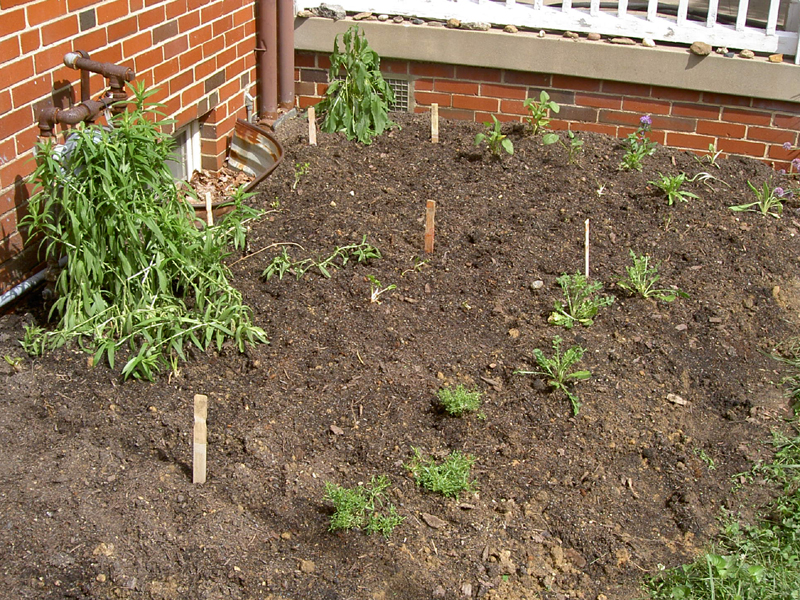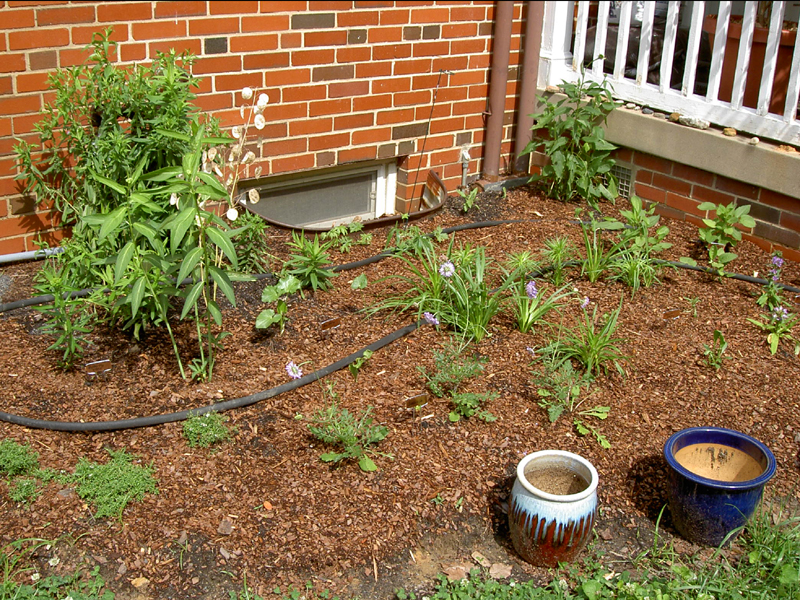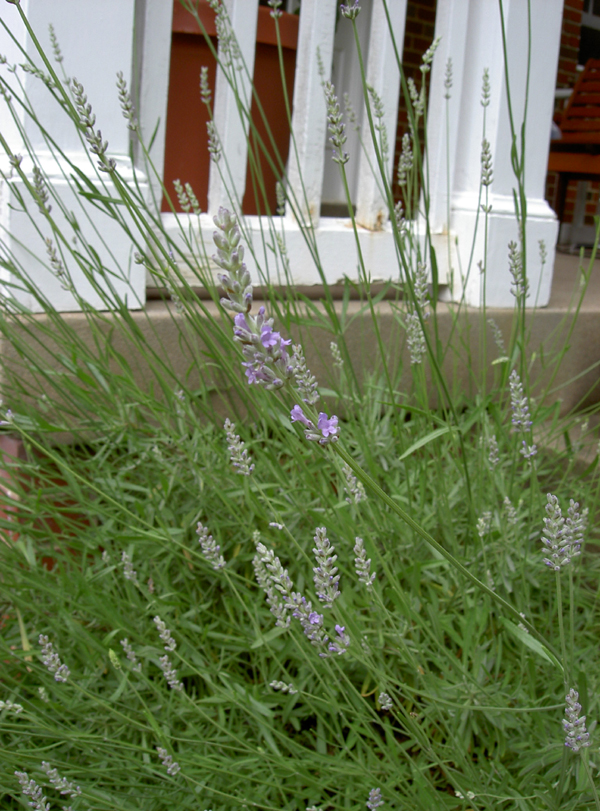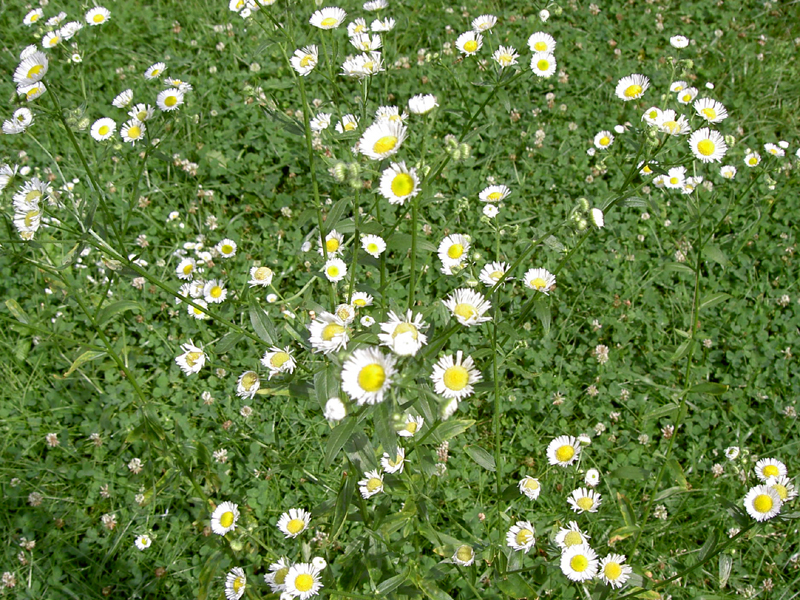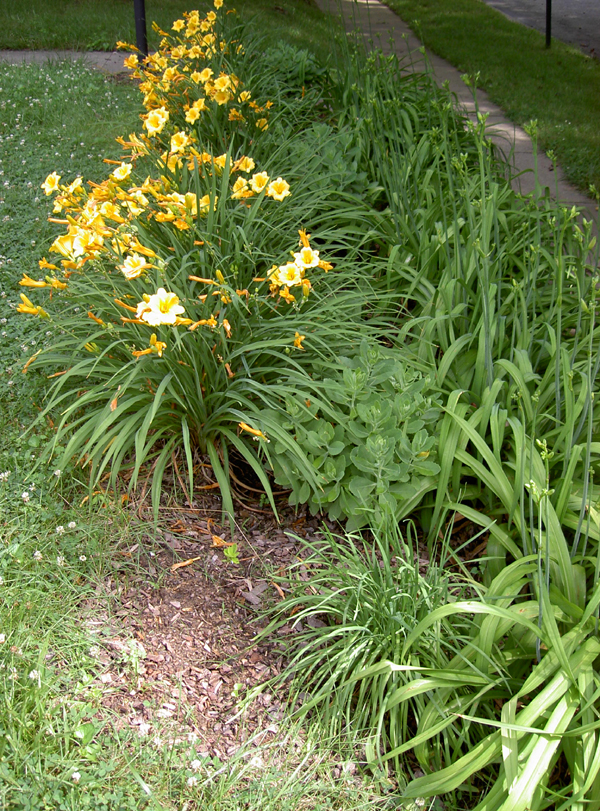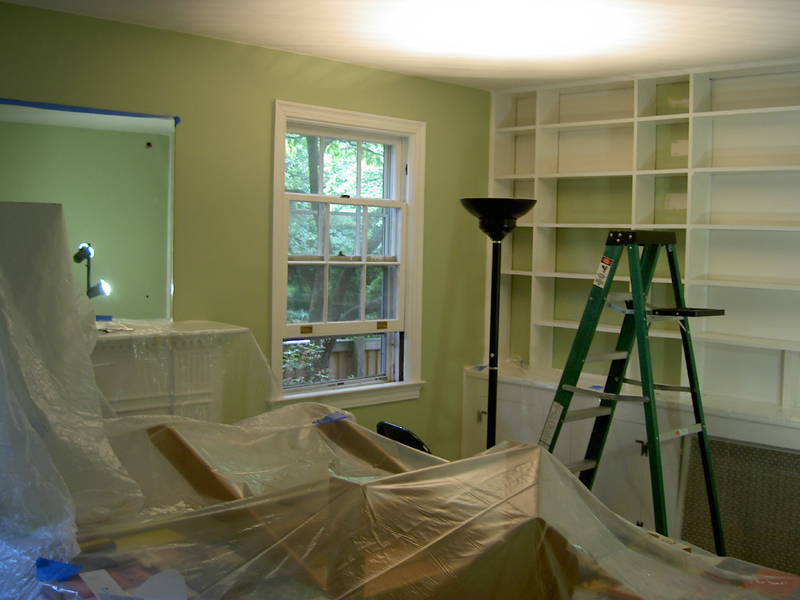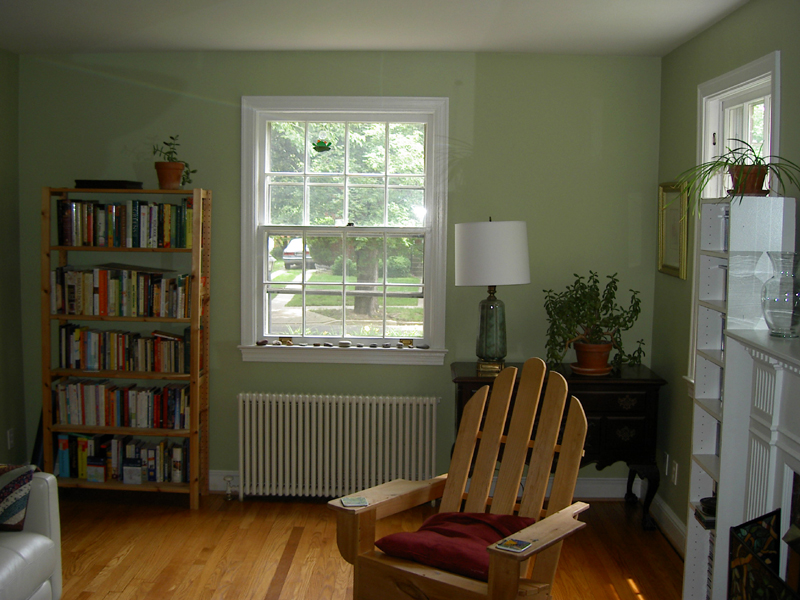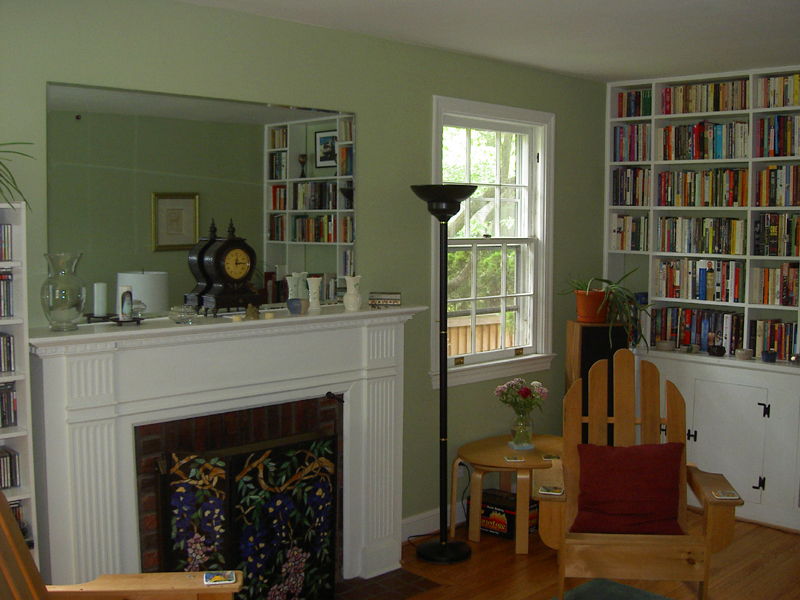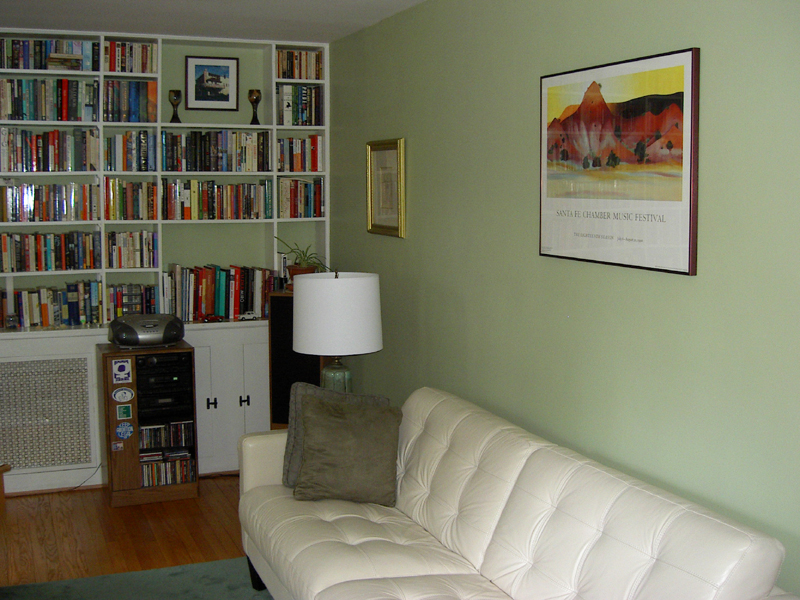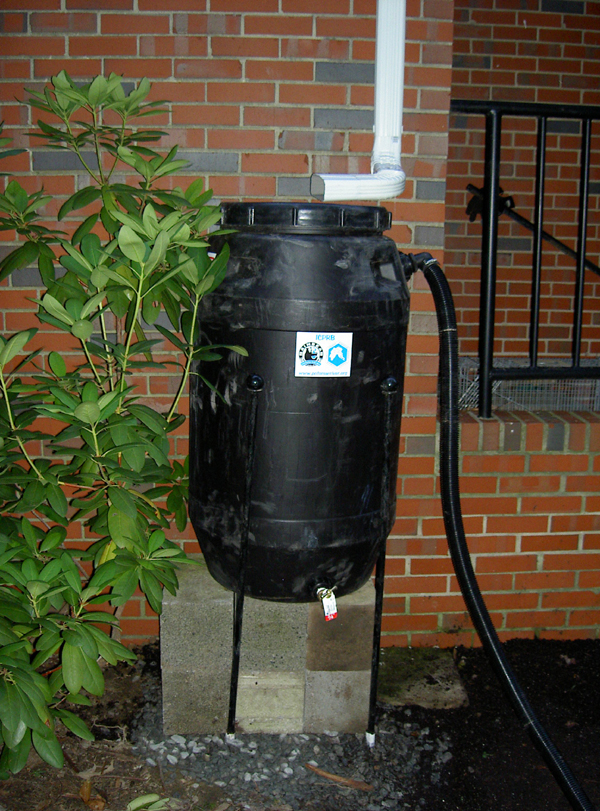
Freshly installed rain barrel, with rhododendron.
I have two overarching goals with regard to our house: (1) to make the entire enterprise of living here more energy efficient and (2) to make the yard and garden more pleasant and usable. Rain barrels address both of these aims to a certain degree, by reducing the amount of water used outside and taking away a favorite breeding ground for the nasty little daytime mosquitoes that proliferate in our town. While the rain barrel has an overflow tube, the tube can more readily be screened to prevent mosquitoes from breeding in the tube, since the water in the barrel is screened at the entry point.
I had been thinking about rain barrels for some time when I read about a local workshop in Organic Gardening magazine (something I probably never would have looked at but have greatly enjoyed since receiving a subscription with our composter). The workshop took place at the Accokeek Foundation, and was a collaboration with the Interstate Commission on the Potomac River Basin (ICPRB). ICPRB has commissioned Rain Bear Rain Barrels, which are well-suited to the hot mosquito-heaven that is our area during the summer; I thought we’d be making the barrels ourselves, but then learned that they are pre-assembled by volunteers onsite at the Accokeek Foundation. The workshop was more informative that hands-on, designed to make sure that we all knew how to install the barrels safely in order to not have them drown a raccoon or fall on a child. Once we’d gotten the information and signed a liability waiver (‘I will not sue you if my rain barrel drowns a raccoon or falls on a child’) we were free to go. A very nice man who lives two towns over from ours loaded one of my barrels into the back of his ginormovan SUV and dropped it off at our house after it was a surprise only to me that just one of the 60-gallon barrels would fit in our Saturn (now is the time when you’re impressed that any 60-gallon barrel would fit in our Saturn).
Once we got the barrels home, they stayed in the backyard against the house (upside down) for a month. Mostly because we hadn’t decided what modifications we’d make to the downspout and partly because I wasn’t that confident in my ability to level the ground. Even though I intellectually understand that paying the bank an obscene amount of money every month means that we can do whatever we like here, including lopping off the downspouts, I have a pretty large barrier to undertaking new projects of that sort. In the end, we decided to create a replacement short downspout that could be swapped out in the winter, thus avoiding having any flexible tubing that invariably turns into a mosquito Club Med. In the end, I mostly supervised and my partner did all the work of leveling, cinder block carrying and arranging, downspout cutting and reassembling, and barrel placement. It took us two days with the heat, some order of operations errors, and the fact that it was going to rain that night so it couldn’t stay half-assembled. In the course of getting the space ready, we had to cut the rhododendron back a bit; we dug up some of the rooted branch and passed along the section to a friend who was looking for something to replace an azalea that had died. By the time we got the segment into and out of the car again, it looked much scruffier than it had when we started digging it out. So far it’s survived, though, and we’re hoping that with some TLC and rain it will bush out and look like an actual plant.
The night we finished assembling the barrel—singular, as we still need to scrounge up some more cinder blocks and clear out some underbrush to create a space for the second barrel on the other side of the addition, a task delayed by having two wedding things, a pool party, and a 40th birthday party to attend last weekend—it poured rain. We ran outside to check on our barrel, all excited, only to discover that my partner had assembled the pieces of the spout inside-out and water was gushing out at each of the seams. So, in the middle of a lightning storm, he stood on a metal railing and dismantled the metal downspout, using metal pliers to reshape the pieces and make them fit back together the other way. After which our barrel filled up in about 39 seconds flat, and we were able to determine that yes, the overflow tube works just as it’s meant to. Since then, I’ve used the water for the ficus trees that are now out on the porch and some of the indoor plants; I need to get a watering can with a more narrow spout if I’m going to water the indoor plants from the barrel and not have to make a million trips out to the backyard with the plastic cups I typically use. Already I’ve noticed a marked downturn in the numbers of daytime mosquitoes on that side of the house and the water comes out as cool as promised.
I don’t know how many barrels we’ll end up with, although I did have this vision of a barrel at every downspout (which would probably not look the best at the front of our historic brick house, so is unlikely to happen). The barrels are $90 each, which is about half as much as those I found online, but if you’re buying more than a few it’s more economical to get a 400 gallon tank-style barrel. I’m not sure we have either the space or the watering needs for the larger barrel, so I keep reminding myself that the goal is not to collect every drop of water possible from our roof, but is instead to replace the tap water that I’d be using anyway. That isn’t actually a lot, as I don’t typically water my garden after the plants are established (the water is not recommended for car-washing, as it collects small grit from the roof and gutters). Having 120 gallons on hand at any given time seems pretty sufficient for our purposes, and we’ll just need to keep working on managing the water deluges in other ways.

